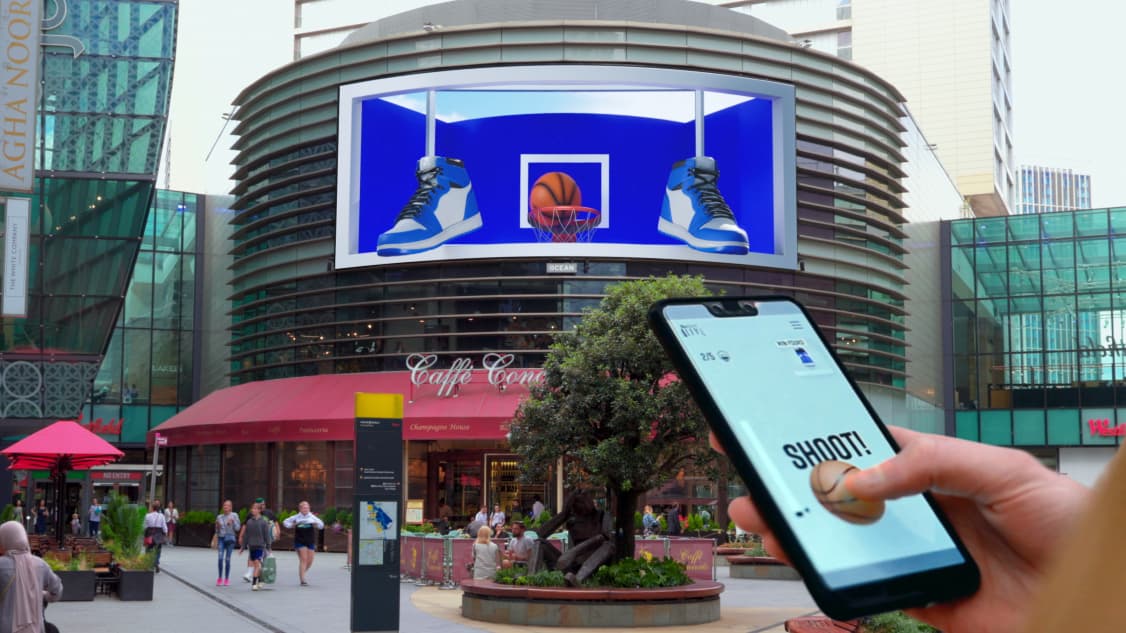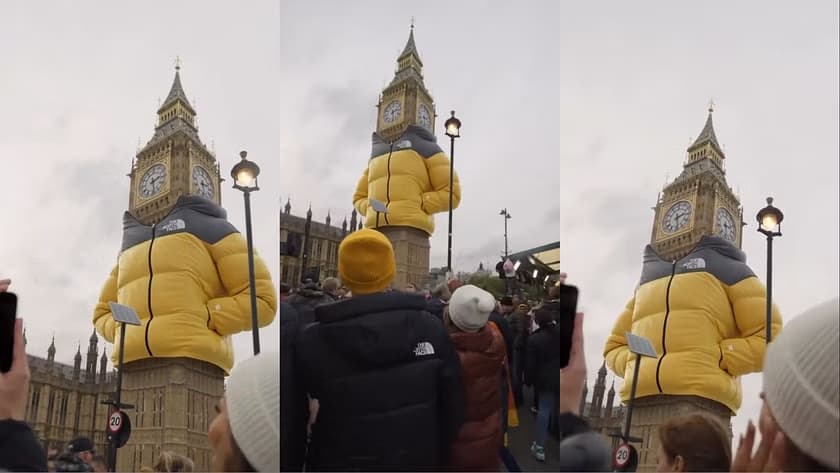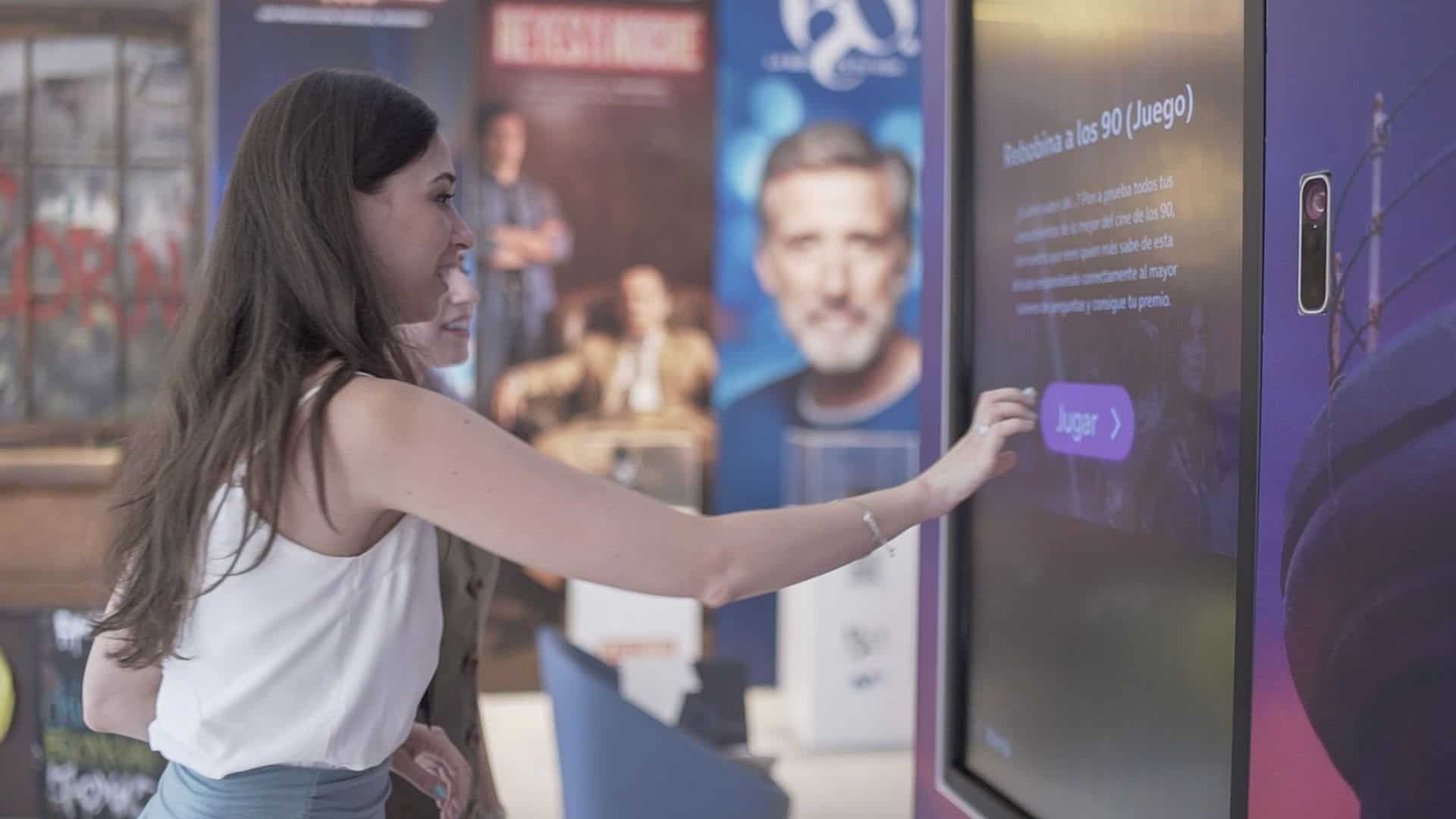Inside Look: How Immersive Advertising is Transforming Marketing
Want to save time?
Summarize this article in seconds with AI
In today's digital era, advertising all over the world is witnessing a significant shift towards immersive marketing. AI, VR, and AR are more than just the buzzwords of the tech world. They have become the new frontier in creating deeply engaging and personalized immersive advertising experiences.
Imagine this:
At your latest visit to the art museum, you're not just an observer of Renaissance masterpieces but directly part of the exhibit. The Hong Kong Museum of Art has introduced a unique immersive feature in its latest exhibition, leveraging generative AI technology to transform visitors into Renaissance portraits in the style of Titian.
You stand in front of a large screen, strike a Renaissance-inspired pose, and the AI technology works its magic, rendering your image into a Titian-style portrait. These AI-generated portraits are then displayed alongside traditional Renaissance paintings on digital screens that mimic classic frames, effectively blending modern creations with historical art.
You scan a QR code and enter some basic information to receive the image digitally. Then, you take a photo of your portrait on the wall to post on social media or share with friends.

Source: South China Morning Post
This is a perfect example of how immersive advertising can help advertisers and brands boost engagement, digital, and dark social footprint with personalized campaigns. But the impact doesn't stop at engagement. These technologies are also redefining the concept of storytelling. It is about creating an emotional and immersive experience that traditional media can't match. Let's explore more!
What is Immersive Advertising?

Source: Mobile Marketing Magazine
Immersive advertising or immersive marketing leverage technologies like VR, AR, and AI to create interactive and engaging ad campaigns, allowing consumers to deeply engage with a brand or product in a virtual or enhanced environment. This approach enhances emotional connections and engagement by offering consumers a memorable, personalized experience that goes beyond traditional advertising.
The Pros & Cons of Immersive Advertising

Source: Dot Dot News
The Pros:
- Unprecedented Engagement: Immersive advertising are seen, heard, and experienced. This level of interaction ensures higher engagement rates and deeper emotional connections with the brand.
Example: World Wildlife Fund used VR to transport people to the Amazon rainforest or the Arctic, creating a powerful emotional response that drives donations and support more effectively. - Next-Level Personalization: AI's data-crunching abilities mean these immersive ads can be tailored to the individual's preferences, behaviour, and even mood, making every marketing message resonate more effectively.
Example: Spotify uses AI to analyze listeners' habits, enabling advertisers to target their ads based on mood, time of day, and music genre preferences. This leads to highly relevant ads that feel more like a service than an intrusion. - Standout Experiences: In a world of ad blockers and banner blindness, VR and AR offer a fresh and captivating way to capture consumer attention.

Source: IKEA
Example: IKEA's AR app, IKEA Place, allows users to visualize how furniture would look in their homes before making a purchase. This not only enhances the shopping experience but also reduces the likelihood of returns and dissatisfaction.
The Cons:
- Cost and Accessibility: The cost of developing high-quality VR or AR immersive advertising can be steep, potentially putting them out of reach for smaller businesses without the necessary resources.
- Technical Hurdles: The path to seamless immersive marketing is fraught with technical challenges, from ensuring device compatibility to overcoming user interface issues.
- Data Privacy Dilemmas: With great data comes great responsibility. The advanced data collection methods used by AI can lead to concerns over privacy and security, requiring careful navigation and transparency.
- Complexity in Content Creation: Creating content for VR and AR requires a different set of skills and tools than traditional media. For AR, for example, 3D modeling and real-time interaction design are critical, which can be a steep learning curve for teams accustomed to 2D video and graphics
Navigating the Future for Advertisers
For advertisers willing to jump into the immersive marketing bandwagon, the rewards can be substantial. It's about thoughtfully integrating these technologies in ways that add genuine value to the consumer experience. This might mean starting small with AR-enhanced print ads before diving into the deep end with full-fledged immersive advertising campaigns. Here are some tips on how to get started:
Start with Education

Source: Forkast News
- Attend workshops, webinars, and conferences focused on VR, AR, and AI to understand the capabilities and limitations of these technologies.
- Follow industry leaders and companies that are pioneers in immersive technology to stay updated on the latest trends and case studies.
Experiment with AR

Source: Sportskeeda
- Begin with AR-enhanced print ads, DOOH, social media filters, and FOOH (click to learn more!) which are more accessible and less costly to implement.
- Use AR for product visualizations, allowing consumers to see how products would look in their environment or on themselves.
Invest in VR Experiences

Source: Hospitality Net
- Develop virtual showrooms or product demonstrations for high-ticket items, where the immersive experience can significantly enhance the buying decision.
- Partner with VR platforms or app developers to create branded content or experiences that can be accessed through existing VR channels.
Leverage AI for Personalization
- Utilize AI to analyze consumer behavior and preferences to create personalized immersive advertising experiences.
- Implement chatbots in immersive environments to guide users through the experience and provide interactive customer service.
Prototype and Test
- Create prototypes of your immersive advertising campaigns and test them with target audiences to gather feedback and make necessary adjustments.
- Use A/B testing to compare the effectiveness of immersive ads against traditional ads in achieving campaign objectives.
Focus on Storytelling
- Craft compelling narratives that can be enhanced by immersive technologies, making sure the tech serves the story rather than the other way around.
- Consider how VR or AR can immerse the consumer in the story, making the brand experience more memorable and impactful.

Source: Imascono
Prioritize User Experience
- Ensure that the immersive experience is user-friendly and accessible, with clear instructions and minimal barriers to entry.
- Pay attention to the design and flow of the experience to prevent user frustration or disengagement.
Measure and Analyze
- Establish clear KPIs for immersive marketing campaigns, including engagement metrics, conversion rates, and feedback scores.
- Use analytics tools designed for VR and AR to track user interactions and identify areas for improvement.
Stay Ethical and Transparent
- Be transparent about data collection and use in immersive experiences, ensuring privacy and security are top priorities.
- Consider the ethical implications of immersive advertising, especially in terms of user consent and the realism of virtual experiences.
Collaborate and Partner
- Collaborate with technology providers, creative agencies, and other brands to share knowledge and resources.
- Look for partnership opportunities that can help extend the reach and impact of your immersive marketing campaigns. Just as the Teleport and Cyberport collaboration we talked about in the 2024 OOH trend article.
Looking Ahead: A Blended Reality
The trajectory of immersive advertising experience points towards an increasingly blended reality, where digital and physical worlds converge more seamlessly. As the technology becomes more accessible and consumer adoption grows, we can anticipate a future where immersive ads are the norm.
 Cookie preferences
Cookie preferences








 Xiaohongshu Advertising Guide: How Can Hong Kong Brands Maximize Their Results?
Xiaohongshu Advertising Guide: How Can Hong Kong Brands Maximize Their Results?
 2x your advertising effectiveness: Master big data to optimize ad ROI
2x your advertising effectiveness: Master big data to optimize ad ROI
 Top 5 Best Ads in 2025 in Hong Kong
Top 5 Best Ads in 2025 in Hong Kong
 Hong Kong Outdoor Advertising Cost in 2026 | Adintime Report
Hong Kong Outdoor Advertising Cost in 2026 | Adintime Report
 Marketing Calendar 2026: Key Dates For Marketing Success
Marketing Calendar 2026: Key Dates For Marketing Success
 The Most Widely-Read Magazine and Newspaper in Hong Kong
The Most Widely-Read Magazine and Newspaper in Hong Kong
 Understanding YouTube Advertising Costs in 2025
Understanding YouTube Advertising Costs in 2025
 OOH /DOOH advertising in Hong Kong: Formats and Rates (2025 Update)
OOH /DOOH advertising in Hong Kong: Formats and Rates (2025 Update)
 How much does LinkedIn Advertising Cost? (2025 Update)
How much does LinkedIn Advertising Cost? (2025 Update)
 Press Ad Basics: Types, Formats and Ad Price
Press Ad Basics: Types, Formats and Ad Price